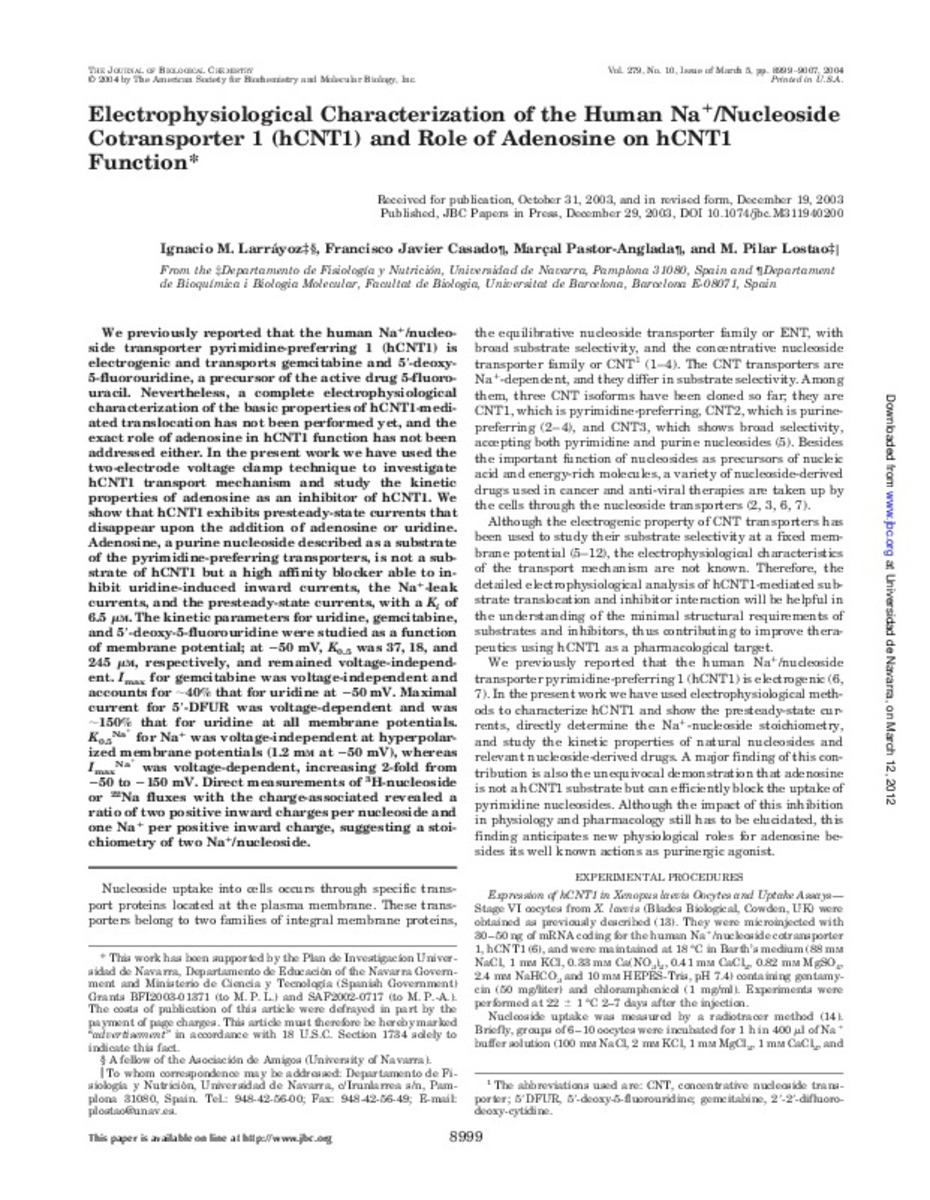Electrophysiological characterization of the human Na(+)/nucleoside cotransporter 1 (hCNT1) and role of adenosine on hCNT1 function.
Keywords:
Xenopus-Laevis oocytes
NA+ glucose cotransporter
Nucleoside transporter
Electrogenic properties
Mammalina cells
Pyrimidine
Publisher:
American Society for Biochemistry and Molecular Biology
Citation:
Larrayoz IM, Casado FJ, Pastor-Anglada M, Lostao MP. Electrophysiological characterization of the human na(+)/nucleoside cotransporter 1 (hCNT1) and role of adenosine on hCNT1 function. J Biol Chem. 2004 Mar 5;279(10):8999-9007.
Statistics and impact
0 citas en

0 citas en

Items in Dadun are protected by copyright, with all rights reserved, unless otherwise indicated.







